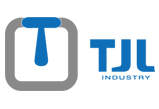- Home
- >
- Technology
- >
- Common assembly methods of valves
Common assembly methods of valves
The complete machine is the most basic unit for valve assembly. Several parts constitute the components of the valve (such as valve cover, valve disc, etc.). The assembly process of several parts forming parts is called component assembly, and the assembly process of several parts and components forming valves is called general assembly. Assembly work has a great impact on product quality. Even if the design is accurate and the parts are qualified, if the assembly is improper, the valve can not meet the specified requirements, and even seal leakage occurs. Therefore, special attention should be paid to adopting reasonable assembly methods to ensure the quality of the final product of the valve. The assembly process defined in the form of documents in production is called assembly process specification.
There are three common assembly methods for valves, namely complete replacement method, repair method and selection method.
Complete exchange method
When the valve is assembled by the complete exchange method, each part of the valve can be assembled without any repair and selection, and the assembled product can meet the specified technical requirements. At this time, the valve parts shall be processed in full accordance with the design requirements to meet the requirements of dimensional accuracy and geometric tolerance. The advantages of the complete exchange method are: the assembly work is simple and economical, the workers do not need a high degree of skills, the production efficiency of the assembly process is high, and it is easy to organize the assembly line and organize professional production. However, absolutely speaking, when adopting complete replacement assembly, the machining accuracy of parts is required to be high. It is applicable to valves with absolutely simple structure such as stop valve, check valve and ball valve, as well as valves with medium and small diameters.
Matching method
The valve is assembled by the selection method. The whole machine can be processed according to the economic accuracy. During assembly, select a size with adjustment and compensation effect to achieve the specified assembly accuracy. The principle of the selection method is the same as that of the repair method, but it is different in the way of changing the size of the compensation ring. The former uses the method of selecting accessories to change the size of the compensation ring, while the latter uses the method of trimming accessories to change the size of the compensation ring. For example, the top core and adjusting gasket of the double gate wedge gate valve of the control valve model, the adjusting gasket between the two bodies of the split ball valve, etc. are to choose special parts as compensation parts in the dimension chain related to the assembly accuracy, and achieve the required assembly accuracy by adjusting the thickness of the gasket. In order to ensure that the fixed compensation parts can be selected and matched in different situations, it is necessary to manufacture a set of gaskets and shaft sleeve compensation parts with different thickness and size in advance, and the model of hydraulic control valve for assembly.
Repair method
The valve is assembled by repair method, and the parts can be processed according to the economic accuracy. During assembly, repair a certain size with adjustment and compensation effect, so as to achieve the specified assembly goal. For example, the gate and valve body of wedge gate valve, because the processing cost of realizing the exchange requirements is too high, most manufacturers adopt the repair process. That is, when finally grinding the sealing surface of the ram to control the opening size, the plate shall be matched with the opening size of the sealing surface of the valve body, so as to achieve the ultimate sealing requirements. Although this method adds the plate matching process, it greatly simplifies the dimensional accuracy requirements of the previous processing process. The special personnel in the plate matching process are skilled in operation, and generally speaking, it will not affect the production efficiency. Assembly process of valves: individual valves are assembled on fixed site. The assembly of parts and components and general assembly of valves are carried out in the assembly workshop, and all required parts and components are transported to the assembly place. Usually, the number of groups of workers are responsible for the assembly of parts and the total assembly, which not only shortens the assembly cycle, but also facilitates the application of special assembly tools, and the requirements for the technical level of workers are relatively low.
Some foreign manufacturers or high-tech valves also adopt the mode of assembly suspension line or assembly turntable.
Preparation before assembly
The burr formed by machining and welding residual welding slag shall be removed before the assembly of valve parts, and the filler and gasket shall be cleaned and cut.
Cleaning of valve parts
As a fluid pipeline control valve, the inner cavity must be clean. Especially for valves used in nuclear power, medicine and food industries, in order to ensure the purity of the medium and avoid medium infection, the requirements for the cleanliness of the inner cavity of the valve are more stringent. Before assembly, the valve parts shall be cleaned, and the chips, debris, residual smooth oil, coolant, burr, welding slag and other dirt on the parts shall be cleaned. The cleaning of the valve is usually sprayed with alkali water or hot water (kerosene can also be used for cleaning) or cleaned in an ultrasonic cleaning machine. The parts shall be finally cleaned after grinding and polishing. The final cleaning is usually to brush the sealing face with gasoline, then dry it with compressed air and wipe it with a cloth.
Packing and gasket preparation
Graphite filler is widely used because of its corrosion resistance, good sealing and low friction coefficient. Packing and gasket are used to prevent medium leakage between valve stem, bonnet and flange joint surface. These accessories shall be prepared for cutting and receiving before valve assembly.
Valve assembly
The valve is usually assembled with the valve body as the reference part according to the sequence and method specified in the process. Review the parts and components before assembly to avoid the parts without deburring and cleaning entering the final assembly. During the assembly process, the parts shall be handled with care to avoid bumping and scratching the processing personnel. The movable parts of the valve (such as valve stem, bearing, etc.) shall be coated with industrial butter. The bonnet and the flange in the valve body are mostly connected by bolts. When tightening the bolts, they should be said, interleaved, repeatedly and evenly tightened, otherwise the joint surface of the valve body and bonnet will leak due to uneven stress around the flow control valve. The handle used for fastening should not be too long to prevent excessive preload from affecting the bolt strength. For valves with strict requirements for preload, torque handle shall be used to tighten the bolts according to the specified torque requirements. After the final assembly is realized, the control mechanism shall be rotated to check whether the activities of the valve opening and closing parts are mobile and whether there is jamming. Whether the installation direction of pressure reducing valve cover, support and other parts meets the requirements of the drawing, and the valve can be tested only after passing all reviews




;)
;)




